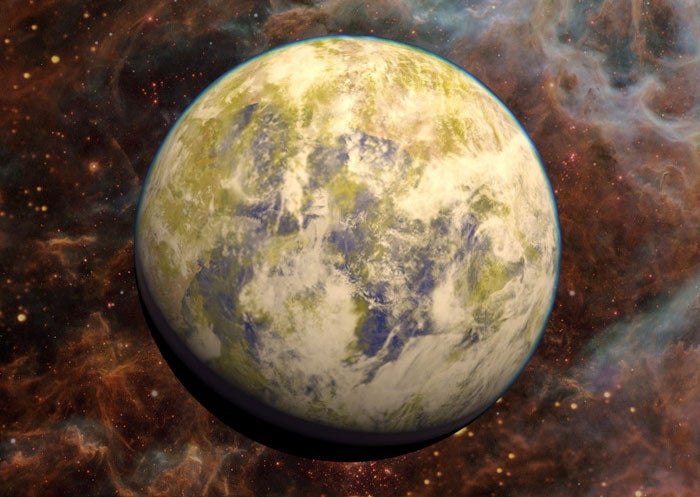One of the most Earth-like planets in the galaxy has been discovered 'a stone's throw away'
Gliese 832c is a super-Earth located in the 'Goldilocks zone' of a solar system 16 light years away

Astronomers have discovered an alien planet that could offer some of the most Earth-like conditions seen to date in the galaxy.
Located just 16 light years away from our planet, Gliese 832c is a super-Earth with a mass 5.4 times that of our own planet orbiting a red dwarf star every 36 days.
This orbit means that Gliese 832c is much closer to its host star than we are to ours, but because its red dwarf star has only half the mass of our Sun the planet receives around the same amount of stellar energy as we do.
This puts Gliese 832c in the habitable or ‘Goldilocks zone’ in its solar system – a sweet spot where it is neither too hot nor too cold for liquid water to exist upon the planet’s surface.
“With an outer giant planet and an interior potentially rocky planet, this planetary system can be thought of as a miniature version of our Solar System,” said professor Chris Tinney of the University of New South Wales where the super-Earth was discovered.
“If the planet has a similar atmosphere to Earth it may be possible for life to survive, although seasonal shifts would be extreme,” he added.
Unfortunately this doesn't mean it's a given that Gliese 832c is similar to Earth on the surface, as the large mass of the planet means that it probably has a thicker atmosphere than ours that has led to a runaway greenhouse effect and boiling temperatures.
However, for astronomers the most exciting aspect of Gliese 832c is its relative proximity – 16 light years away in a galaxy that is 100,000 light years wide. Writing on Space.com, Mike Wall said: “it's just a stone's throw from Earth in the cosmic scheme of things.”
Join our commenting forum
Join thought-provoking conversations, follow other Independent readers and see their replies
Comments
Bookmark popover
Removed from bookmarks